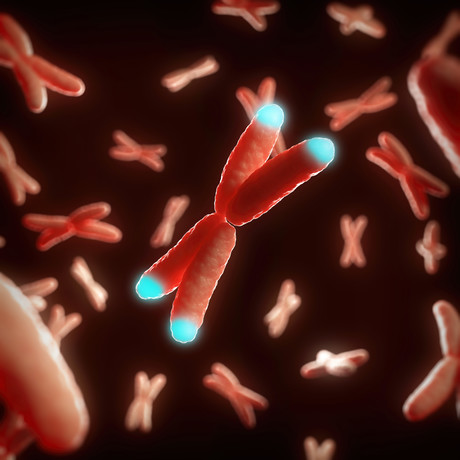Why do telomeres turn unhealthy as we age?

Scientists from Sydney’s Children’s Medical Research Institute (CMRI) have made a groundbreaking discovery in telomere biology, with implications for conditions ranging from cancer to ageing and heart disease.
Telomeres are DNA segments of at the ends of every human chromosome. As we age, telomere length naturally decreases. Over the course of a lifetime, telomere shortening instructs ageing cells to stop dividing, which normally functions as a critical barrier to stop cancer.
But some people are born with abnormally short telomeres and suffer from bone marrow failure, pulmonary fibrosis and high rates of cancer. Telomere length is also an important marker of disease risk for conditions such as cancer, heart disease and diabetes.
However, it has remained a mystery why telomeres change from healthy to unhealthy with age. The CMRI research, led by Dr Tony Cesare and published in the journal Molecular Cell, has now identified the underlying cause.
“We knew that telomeres regulate cellular ageing, but our new data explain the trigger that makes telomeres unhealthy,” Dr Cesare said. “Telomeres normally form a loop structure, where the chromosome end is hidden. We found that when the telomere-loop unfolds, the chromosome end is exposed and the cell perceives this as broken DNA.
“It is not telomere length that matters, but telomere structure. The telomere-loop becomes harder to form as telomeres get short.”
Additionally, the team identified that telomeres can also change structure in response to some chemotherapeutic agents, which helps kill cancer cells.
Dr Cesare first developed his theories about telomere-loops in 2002 when studying for his PhD; however, the technology was not available at the time to easily visualise telomere-loops using microscopy. This all changed with the advent of super-resolution microscopy, which made it possible to see telomere-loops with a microscope.
To complete this research, the team used super-resolution microscopes at four Sydney research institutions, and purchased the first ‘Airyscan’ super-resolution microscope in Australia. According to Dr Cesare, “This technology allowed us to see 10 times more detail than we had in the past. We could pass the physical limits of light and see the telomere-loop structure.”
The team combined this technology with powerful genetic models that mimic cellular ageing. As a result, they become the second group in the world to see telomere-loops with super-resolution microscopes and the first to determine their function — a milestone that took them four and a half years to reach.
“We’ve shown that it’s not just telomere length, but telomere structure and telomere health that we need to understand,” said Dr Cesare. “The next step is to ask, can we correlate human health with telomere health? Our work suggests there is more to the story than just measuring telomere length.”
Babies of stressed mothers likely to get their teeth earlier
Maternal stress during pregnancy can speed up the timing of teeth eruption, which may be an early...
Customised immune cells used to fight brain cancer
Researchers have developed CAR-T cells — ie, genetically modified immune cells manufactured...
Elevated blood protein levels predict mortality
Proteins that play key roles in the development of diseases such as cancer and inflammation may...





